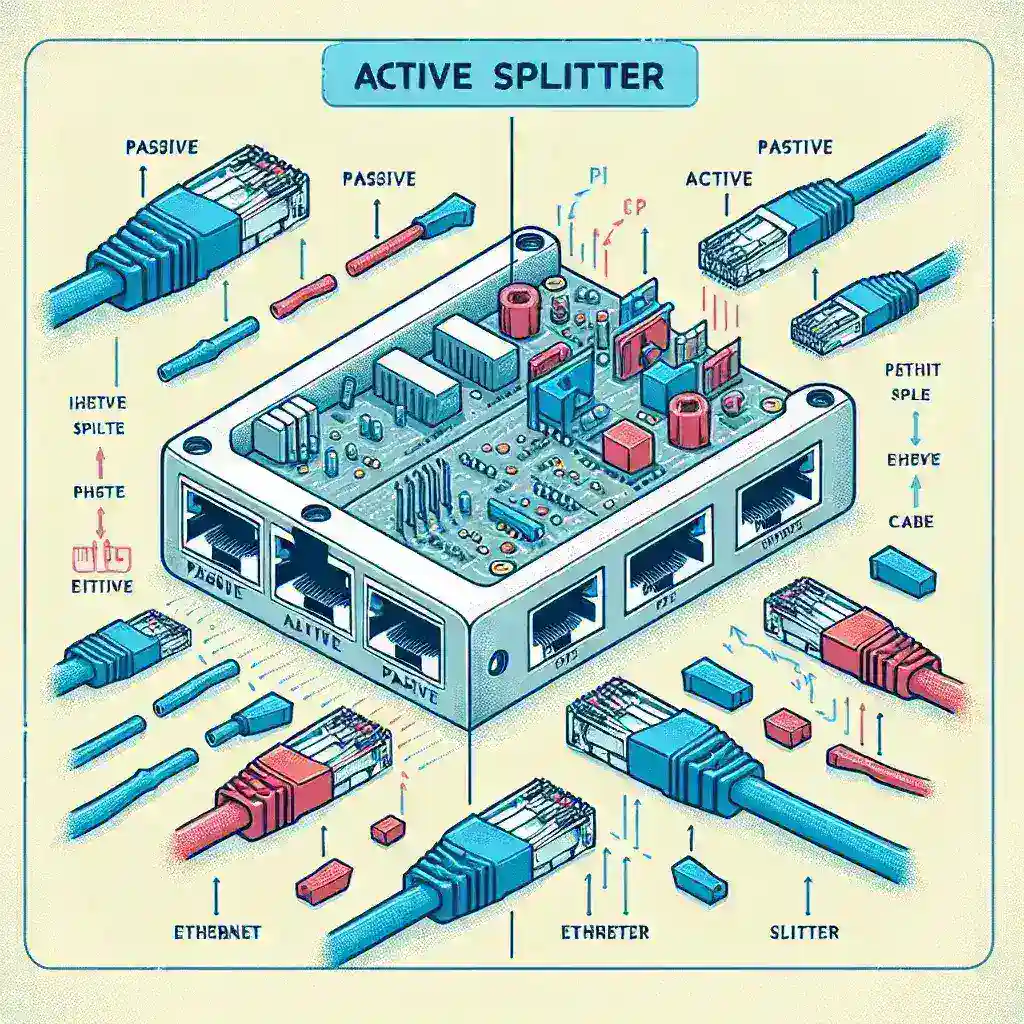When it comes to extending or managing your Ethernet connections, understanding the tools available is crucial for maintaining optimal network performance. Ethernet splitters are devices designed to split a single Ethernet connection into multiple outputs. However, there are significant differences between passive and active Ethernet splitters. This article delves into the core differences, functionalities, pros, and cons of each type, helping you choose the right solution for your networking needs.
Overview: Passive vs Active Ethernet Splitters
Ethernet splitters can broadly be categorized into two types: passive and active. While both serve the basic function of splitting connections, they differ significantly in their operating principles and applications.
| Feature | Passive Ethernet Splitter | Active Ethernet Splitter |
|---|---|---|
| Operating Principle | Splits the signal without power | Requires external power to amplify and split the signal |
| Performance | May suffer from signal loss | Maintains signal strength |
| Cost | Generally less expensive | More costly due to additional electronics |
| Installation | Simple plug-and-play | Requires power outlet and sometimes additional setup |
| Use Case | Suitable for short distances and simple networks | Ideal for longer distances and complex networks |
What is a Passive Ethernet Splitter?
A passive Ethernet splitter is a straightforward device that splits the Ethernet signal into two or more outputs without requiring any external power source. Essentially, it divides the available signals, and each output shares the same bandwidth originally allocated for one connection.
Features of Passive Ethernet Splitters
- Unpowered Operation: They do not need an external power source to function.
- Cost-Effective: Generally, these splitters are the cheaper option since they lack complex electronic components.
- Ease of Use: They are typically plug-and-play devices, requiring no additional setup.
Advantages of Passive Ethernet Splitters
- Low Cost: They are generally affordable and cost-effective for simple applications.
- Easy Installation: With no need for power or additional settings, they are convenient for basic networking needs.
Disadvantages of Passive Ethernet Splitters
- Signal Degradation: Since the signal is not amplified, it may lose strength, especially over longer distances.
- Limited Use Case: They are not suitable for complex or extensive network setups.
What is an Active Ethernet Splitter?
On the other hand, an active Ethernet splitter requires an external power source to function. This type of splitter actively amplifies the Ethernet signal before splitting it into multiple outputs, thereby ensuring that each output maintains the quality and strength of the original signal.
Features of Active Ethernet Splitters
- Powered Operation: Requires an external power source to work.
- Signal Amplification: Actively boosts the signal to ensure strong output connections.
- Complex Design: Contains more advanced electronic components compared to passive splitters.
Advantages of Active Ethernet Splitters
- Signal Integrity: They maintain or even enhance the signal quality across outputs.
- Versatility: Suitable for both short and long-distance connections.
Disadvantages of Active Ethernet Splitters
- Higher Cost: They are generally more expensive due to advanced requirements.
- Power Dependency: They need a constant power source, which could be a limitation.
Key Differences Summarized
To sum up, here are the primary differences between passive and active Ethernet splitters:
- Power Requirement: Passive splitters don’t need external power, while active splitters do.
- Cost: Passive splitters are cheaper, whereas active splitters tend to be more costly.
- Signal Quality: Passive splitters may cause signal loss; active splitters maintain signal integrity.
- Installation Complexity: Passive splitters are simpler to install compared to active splitters.
- Ideal Use Case: Passive splitters are best for basic, short-distance applications, whereas active splitters are suitable for complex, long-distance networking setups.
Choosing the Right Ethernet Splitter
Choosing between a passive and active Ethernet splitter largely depends on your specific networking needs and preferences. Here are some considerations to help you make an informed decision:
Factors to Consider
- Network Complexity: For complex networks requiring reliable connectivity, an active splitter is generally more suitable.
- Distance: If you need to cover long distances, opt for an active Ethernet splitter to maintain signal integrity.
- Budget: If cost is a significant factor, and your needs are simple and short-range, a passive splitter might suffice.
- Installation: Consider how comfortable you are with the installation process. A passive splitter is easier to set up, while an active splitter might require additional steps due to the power requirement.
Conclusion
Both passive and active Ethernet splitters have their own sets of advantages and disadvantages. Understanding their differences is crucial for making the right choice for your network setup. Whether you are setting up a simple home network or a more complex corporate environment, being aware of these distinctions will help you ensure a robust and efficient networking infrastructure.
